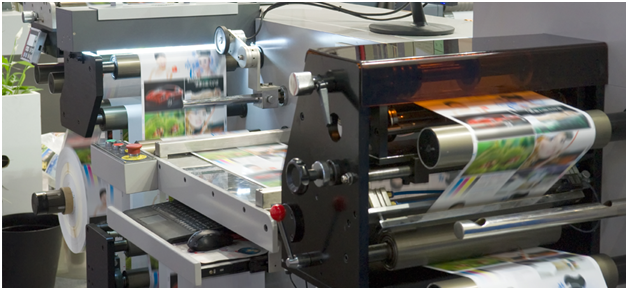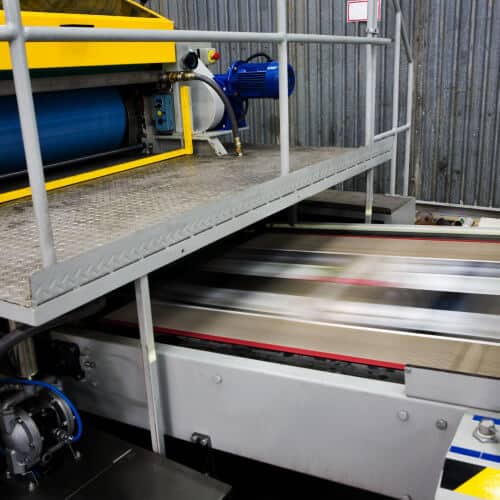Eco-Friendly and Low-Impact Options in litho printing
A Comprehensive Guide to Understanding Litho Printing Strategies
The world of litho printing, a technique stemming from the late 18th century, is a fascinating mix of background, art, scientific research and development. Remain with us as we journey into the exciting realm of litho printing.
The Historical Evolution of Litho Printing
The historical trajectory of litho printing, a crucial advancement in the world of interaction, is an exciting tale of human resourcefulness. The process evolved with the development of the rotary press, which substantially raised efficiency. Each stage of litho printing's evolution showcases humankind's relentless pursuit of efficiency and top quality in visual communication.
Translating the Scientific Research Behind Litho Printing Inks
Moving on in the expedition of litho printing techniques, the emphasis now shifts to the scientific research behind litho printing inks. The structure of these inks, their drying process, and shade mixing methods develop the foundation of this complicated art form. Understanding these elements is essential to understanding the craft and accomplishing the preferred print results.
Composition of Litho Inks
In lithographic printing, the fundamental function of litho inks can not be overemphasized. The make-up of litho inks varies depending upon its function, but generally, they include 2 primary components - automobiles and pigments. Pigments, the color-providing aspects, are carefully ground bits put on hold in the lorry, a fluid that carries the pigment onto the printing surface. The lorry is a complex combination of solvents, resins, and oils, which influence the ink's drying time, bond, and gloss. In addition, numerous additives are existing to enhance particular residential properties like flow, drying out, and resistance to ecological impacts. Each element plays a vital part in the last print's quality, making the specific solution of litho inks a complex scientific research.
Ink Drying Process
From the make-up of litho inks, interest turns to the interesting process of ink drying out. 2 primary approaches are utilized in litho printing: oxidative drying and absorption. Absorption, on the other hand, includes the ink permeating into the paper fibers, which is a quicker procedure yet can lead to less vibrant colors.
Color Mixing Techniques
While the drying procedure plays a crucial function in litho printing, the science of color blending methods holds equivalent significance. The science behind litho printing inks additionally takes into account the transparency of the ink, which influences just how colors overlay and mix.
The Art and Layout Aspects in Litho Printing
Litho printing breathes life right into art and layout with its special components. The procedure involves creating a picture on a lithographic limestone plate or metal plate with a smooth surface. The image is then printed onto a medium, typically paper, by moving the ink from the plate. What sets litho printing apart is its ability to duplicate intricate designs with high fidelity, making the output practically similar to the initial art work. This is accomplished with using various line techniques such as hatching, stippling, and cross-hatching, which permit a variety of tonal impacts. Additionally, litho printing fits a selection of shades, making it possible for musicians to produce vibrant and vibrant prints. This combination of accuracy and adaptability makes litho printing a favored selection for lots of artists and developers.
Modern Applications of Litho Printing Methods
Litho printing methods have located comprehensive usage in the contemporary business sector. Its influence and significance remain to grow with the development of new developments and technologies in the field. This area will discover these contemporary applications and the transformative duty they play in the printing market.
Commercial Litho Printing Utilizes
In today's electronic age, one could question the importance of conventional printing techniques. Yet, litho printing continues to be a crucial part of the commercial market. High-volume printing tasks, such as the manufacturing of books, papers, and packaging, count on litho printing for its capability to provide premium picture top quality and expense performance. The process, which includes moving an inked picture from a plate onto a rubber covering and after that to the printing surface area, offers unrivaled consistency. This makes it suitable for jobs calling for a huge print run. Litho printing also supplies a broad shade range, remarkable to that of electronic printing. This makes it the best selection for tasks that demand lively, premium shade recreation.
Developments in Litho Printing
Pressing the borders of conventional techniques, contemporary innovations have actually sustained a host of innovations in litho printing. These developments have not only enhanced the quality and efficiency of litho prints yet also expanded its application scope. One noticeable development is digital litho printing, which integrates the merits of digital modern technology with litho's high-quality output. This crossbreed design offers faster configuration times, minimized waste, and allows on-demand printing. Another noteworthy innovation is the intro of eco-friendly inks. These inks, made from vegetable or soy-based options, have actually substantially minimized the industry's ecological influence. litho printing. Furthermore, the development of innovative plate technology has streamlined the printing procedure, resulting in sharper photos check out this site and enhanced shade fidelity. These advancements emphasize the enduring significance of litho printing in the modern world.
Discovering the Refine of Litho Printing: Detailed

Difficulties and Solutions in Contemporary Litho Printing

Despite the accuracy and tradition that litho printing proudly maintains, it is not without its set of modern challenges. Digital litho printing permits for cost-efficient brief runs and simple personalization, addressing the problem of variable data. Therefore, while there are difficulties, the litho printing market is proactively adapting to meet them head-on, ensuring its relevance in the future.
Verdict
Finally, litho printing, with its rich history and scientific complexities, holds a substantial area in the print industry. As the guide reveals, it's a synthesis of art and technology, with modern innovations guaranteeing its relevance. The market faces challenges that call for ingenious options, with a focus on automation and sustainability. The future of litho printing depends upon its capacity to adapt to these changing needs, affirming its long-lasting worth hop over to these guys in an evolving market.
